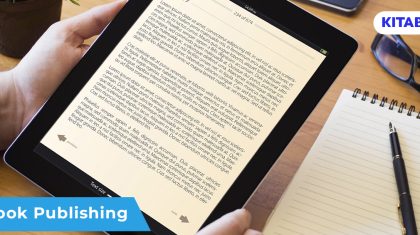
Boosting Student Success with Learning Outcome Analytics: A Guide for Educators
Education is a powerful equalizer for students of all backgrounds, allowing them to build skills, gain knowledge, and thrive professionally. However, the traditional education system has faced many challenges in developing an even playing field for all students.
The instructor-led classroom-style education delivery system comes with certain limitations and is not optimized to meet the needs of all students. For instance, it is challenging for educators to gauge students’ progress unless they conduct an exam or test.
Today, education policy worldwide is evolving, with growing importance placed on the individual performance of every student. Hence, educators need access to superior learning analytics tools and frameworks to empower every student to learn effectively.
Learning outcome analytics is one such tool that enables educators to comprehend learning trends and the effectiveness of all students in-depth. Let’s understand the long-term benefits and impact of this tool and how educators can leverage it to its full potential.
Table Of Contents:
I. What is Learning Outcome Analytics?
II. How Learner Analytics Supports Educators
III. 6 Benefits of Learning Outcome Analytics
- Track Every Learner’s Progress
- Analyze Individual Learner Needs
- Identify Key Learning Gaps
- Reshape the Curriculum Based on Data
- Predict Future Learning Trends
IV. Choosing the Right Learning Outcome Analytics Tools
V. Integrating Learning Management System Analytics
VI. The Takeaway
VII. FAQs
What is Learning Outcome Analytics?
Learning outcome analytics refers to the automated process of collection, analysis, and reporting of in-depth data related to learners and their learning activities, consumption and engagement behaviors, and outcomes.
Learner analysis has emerged as a powerful tool. It enables educators to reshape their teaching strategies, optimize learning environments, create relevant eLearning content and curricula, and boost the learning outcomes for students.
For example, the results of a 2022 research conducted for a program of 12 weeks revealed that learning analytics-assisted recommendations and guidance feedback significantly enhanced students’ metacognitive awareness and academic achievement.
How Learning Outcome Analytics Supports Educators
The lack of real-time data has impeded educators who aim to tap the true potential of every learner rather than a few who excel. Testing and grading students a few times a year cannot accurately determine their true needs. Teachers are also unable to tell if students are adequately engaged in their studies and the areas they struggle in.
However, as more learners shift to eLearning or hybrid learning models, the usage of digital learning analytics tools is changing the status quo. Not only can educators create and publish eLearning content, but they can also track learner activities and engagement on every piece of content through superior learning outcome analytics.
For instance, the digital textbook platform, KITABOO not only enables the creation, publishing, and dissemination of interactive eBooks and other learning resources, but it also comes with rich learning outcome analytics.
Educators can view student engagement in real-time, their performance in assessments, and the areas they struggle with. Access to such educational data analytics is a game-changer for educators. Let’s understand the key benefits.
6 Benefits of Learning Outcome Analytics
Here’s how learning outcome analytics is transforming educational strategy.
1. Track Every Learner's Progress
Traditionally, educators have focused most on the brightest and weakest students in a classroom. There was a significant amount of trial and error to drive better learning outcomes, and individualized attention was a limited opportunity.
However, access to learning outcome analytics of every student makes it possible for educators to identify a learner’s real-time proficiency and progress in the learning journey. Hence, they are better equipped to offer relevant feedback and support to every student.
2. Analyze Individual Learner Needs
Students have extremely diverse needs – from extra learning support to accessibility support. With access to in-depth learning outcome analytics, educators can identify a student’s specific needs and build customized learning pathways based on the data.
For instance, learners with reading challenges can be offered other formats of content, such as videos for learning, as well as support to enhance reading skills. Personalized learning paths can be transformative for a learner’s progress, and more educators are adopting this learning strategy.
3. Identify Key Learning Gaps
AI-powered learning outcome analytics have the potential to recognize unusual patterns across massive volumes of data. Hence, educators can pinpoint common issues that affect a larger cohort of learners and tackle them at scale.
For instance, educators can proactively introduce innovative multimedia learning resources, which simplify concepts and help students master a subject they are weak in.
4. Reshape the Curriculum Based on Data
For a long time, the learning curriculum and strategies have remained the same due to a lack of adequate data on learning effectiveness and relevance. However, learning outcome analytics has completely disrupted the status quo. Educators have the necessary data to reshape the curriculum and delivery approach to become more relevant to individual students.
5. Predict Future Learning Trends
AI-driven predictive learning outcome analytics can help educators prepare adequately and in advance for learning eventualities. Predictive analytics looks at historical and current data and uses algorithms and machine learning (ML) to predict potential learning outcomes.
Predictive analytics can forecast the drop-off rates and learning engagement of specific types of learning resources accessible to students, thus playing an important role in course design. Valued at USD 10.2 billion in 2022, the global predictive analytics market is projected to grow to USD 67.86 billion by 2032.
Choosing the Right Learning Outcome Analytics Tools
Educators need access to the right technology to leverage high-quality learner data, which is collated, processed, and presented as ready-to-use reports.
For instance, an automated cloud-based Artificial Intelligence (AI)- driven digital textbook platform such as KITABOO is a comprehensive tool enabling educators to create, publish, and disseminate superior learning resources. Consequently, they can track learner progress through automatically generated educational data analytics.
Such a tool can produce AI-generated Predictive analytics, which offers insights into learning trends for any minute, day, month, and year in the future. Based on the data, educators can seamlessly create and publish new content and securely distribute it to authorized learners.
This cost-effective, efficient, and accurate tool is an asset to educators. Here is a guide to help you make informed decisions when choosing learning analytics tools:
- Define Your Educational Goals
Define your objectives first before settling on the right tool. Whether you want to monitor student performance, analyze learning behaviors, or identify areas for intervention, understanding your goals will help you select a tool that aligns with your needs.
- Ease of Integration
It should integrate with other tools that you have already invested in, such as an LMS or a student information management system. Thus, at the implementation stage, there will be minimal chances of any technical issues; data will flow smoothly in doing so.
- Data Visualization and Reporting
Select learning analytics tools with intuitive data visualization and report customization. This will help educators quickly understand the data so that trends can be picked, performance evaluated, and action taken on learning outcomes.
- Scalability and Flexibility
As the institution grows, so do the data needs. Be sure that the tool can scale and support larger datasets and can adapt to changing educational programs and course structures.
- Student Privacy and Data Security
Student data is sensitive; therefore, the learning analytics tools to be used must prioritize privacy and respect data protection laws. It should include features like encryption and secure data storage.
- Personalized Learning Capabilities
Educational data analytics must facilitate personal learning. Analyzing a particular student’s performance would guide toward a better learning path uniquely suited to that particular learner. In turn, an educator would be in an excellent position to handle many different needs and, therefore, bring about much greater student success.
- Support and Training
Look for a vendor with ongoing support, training, and other resources that assist your staff in making a successful deployment of the analytics tool. Such support might include tutorial assistance, customer service, or professional development for teachers and school leaders.
Integrating Learning Management System Analytics
The integration of learning management system analytics in usual teaching operations helps instructors record and evaluate their students’ performance in real-time.
LMS educational data analytics reveal the deepest details regarding students’ involvement, progress, and outcomes; hence, a more efficient approach to teaching will be adopted. By including predictive analytics, educators will be able to predict problems and change the learning strategy to yield the best results for students.
With LMS analytics, institutions can automate the gathering of data, allowing educators to have more time to teach in a setting where they are encouraged with insights on how well the students engage with the curriculum. The integration also supports the alignment of learning analytics tools with classroom performance data, providing a holistic view of the educational process.
Benefits of LMS Analytics for Measuring Learning Outcomes
Here are the key advantages of implementing learning analytics tools:
- Real-Time Progress Tracking: Learner analytics mean that immediate student performance data is available to educators. They in turn make quicker interventions and support students.
- Full Data Analysis: Educational data analytics help teachers track not just grades, but engagement metrics, attendance, and participation. This gives a full picture of a student’s learning journey.
- Improved Curriculum Planning: Learner needs analysis reveals which curriculum elements need improvement or restructuring based on student needs.
- Facilitates Continuous Assessment: Unlike assessment upon the conclusion of a term, learning management system analytics allow continuous assessment of learning results during a term to support altering instruction techniques.
- Improves Feedback Cycles: Deep learner analytics allows for more individualized and formative feedback.
Using LMS Data for Learner Needs Analysis
Here is how learning management system analytics can be used in learner needs analysis:
- Frame Personalized Learning Plans: Studies regarding student performance would enable educators to plan individualized learning programs that target the special area where a student failed.
- Form Behavioral Insights: Data in LMS provides educators an understanding of what students do in the online environment, from study habits to participant behavior in other ways, so they could understand how this affects achievement.
- Knowledge of Preferences of Learning: Data regarding how students interact with different kinds of content would inform teachers about their actual learning preferences. This allows teachers to personalize instruction further.
- Offer Customized Support: Predictive analytics enable timely intervention of underperformance through customized support to students identified at risk.
- Monitoring Student Level of Engagement: Learner analytics tools help in assessing the level of engagement of a student. This will allow the educator to evaluate their approaches and keep learners motivated toward active participation in learning.
The Takeaway
Access to learning outcome analytics enables educators to illuminate every student’s performance, needs, and progress. For instance, students with learning challenges can get the support they need to learn effectively and compete at their true potential.
By using cloud-based, AI-enabled digital textbook platforms, educators have access to high-quality, in-depth learning outcome analytics, which allows them to support students and be highly effective in their teaching goals.
Education publishers and providers can leverage state-of-the-art cloud-based digital textbook platforms, such as KITABOO, to publish, distribute, market, and amplify their solutions to their audiences worldwide.
Connect with us to start a conversation.
Suggested Reads:
FAQs
Learner analytics empower instructors to understand student behaviors, monitor student performance, and identify vulnerable students. It is here in the data that opportunities can be created for intervention, therefore improving teacher effectiveness along with the prospect of success for students.
The key features include real-time tracking of data, predictive analysis, data visualization, and configurable reporting. Educators can then track learning outcomes and optimize instruction.
Educational data analytics enables teachers to facilitate learning by providing an understanding of how students engage with the materials. Accordingly, they can modify lesson plans and instructional strategies based on evidence rather than intuition. Educational data analytics results in the overall effectiveness of instruction.
Learning outcome measurement assures that students reach educational standards. It shows where instructional practices need to be modified and provides support for data-informed decisions while developing curriculums.
Predictive analytics allows for the forecasting of achievement performance that students are to realize. It also identifies potential learning challenges for student intervention with better academic results.
Learner analytics tools collect both digital and class-based activity data, which forms an understanding of students' performance for holistic evaluation and personalized teaching.
Top-ranking learning analytics tools like Moodle integrated with KITABOO provide holistic analytics features in the LMS to effectively support data-driven decision-making within the education framework.
Data visualization is useful for educators to understand complex data so that they can make sense of it. It provides the necessary data in visual forms like charts and graphs, further simplifying the interpretation of the performance levels of students.
Discover how a mobile-first training platform can help your organization.
KITABOO is a cloud-based platform to create, deliver & track mobile-first interactive training content.



